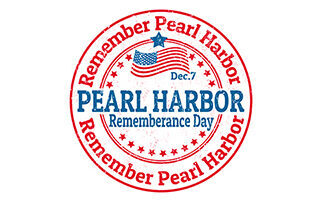
The United States was reluctant to enter the Second World War for about three years. That all changed on December 7, 1941.
In a surprise attack, naval and air forces of the then-empire of Japan bombed the U.S. naval base at Pearl Harbor in Hawaii. It was an unprecedented siege by another nation on American territory. The battleships Arizona, California, Oklahoma and Utah were sunk. In total, about 19 U.S. ships were damaged or destroyed. About 3,000 Americans lost their lives.
The next day, in a special address to Congress, President Franklin D. Roosevelt declared war. His declaration passed by a near-unanimous vote. The President famously referred to December 7, 1941 as “A date which will live in infamy.”
According to The Encyclopedia of American Facts and Dates, “Remember Pearl Harbor was the war cry of the man in the street, who used it more as a grim reminder than as an outburst of patriotism. Women’s fashions, reflecting the general restraint, kept to subdued colors and inconspicuous lines. . . . The nation attained a unity it had not known since the dark days of [The Great Depression]. . . . The nation’s industry tooled up for full-scale war production. . . . Numerous bureaus were established to develop and direct America’s vast economic potential.”
The country was galvanized in a way no other event could have precipitated. The war effort affected every aspect of American life, from domestic affairs to the performing arts, from manufacturing to nuclear science. A titanic fighting apparatus was unleashed, and a protracted struggle in defense of the free world lasting three-and-a-half years was initiated.
In observation of one of the most fateful days in American history, we pay remembrance to those who gave their lives at Pearl Harbor, and give thanks for all those who protected the name of freedom in World War II. Our way of life is due to their sacrifice.


